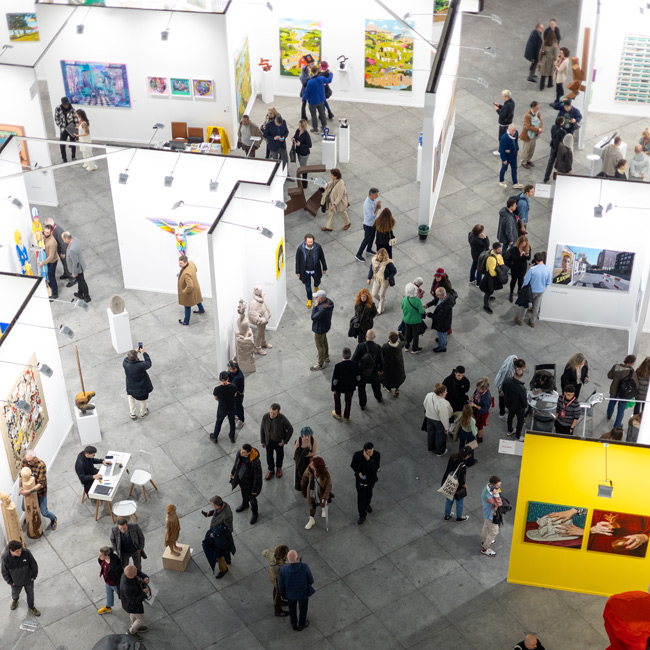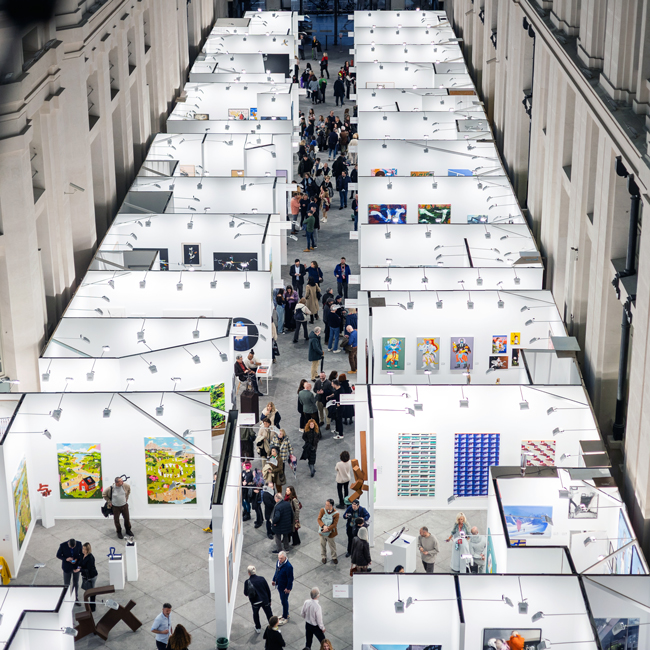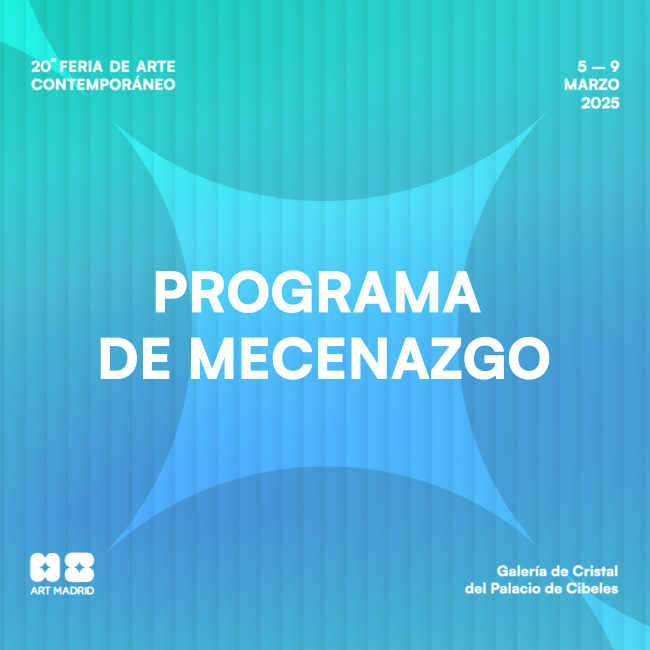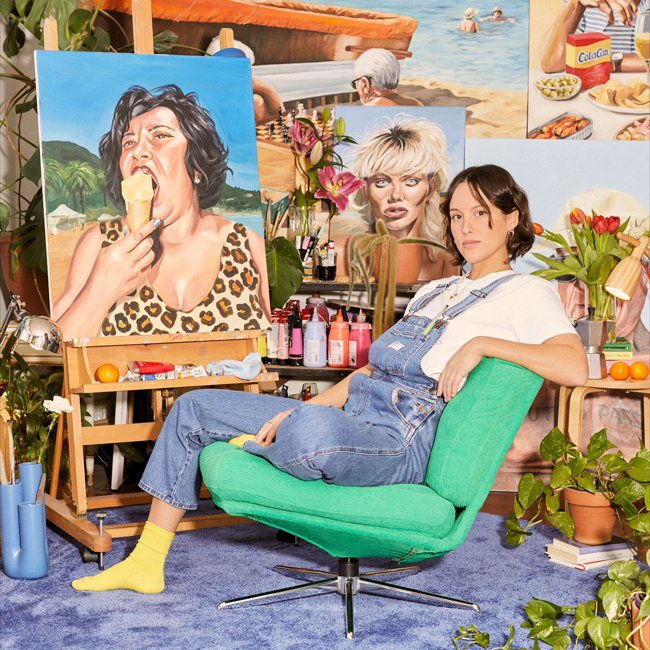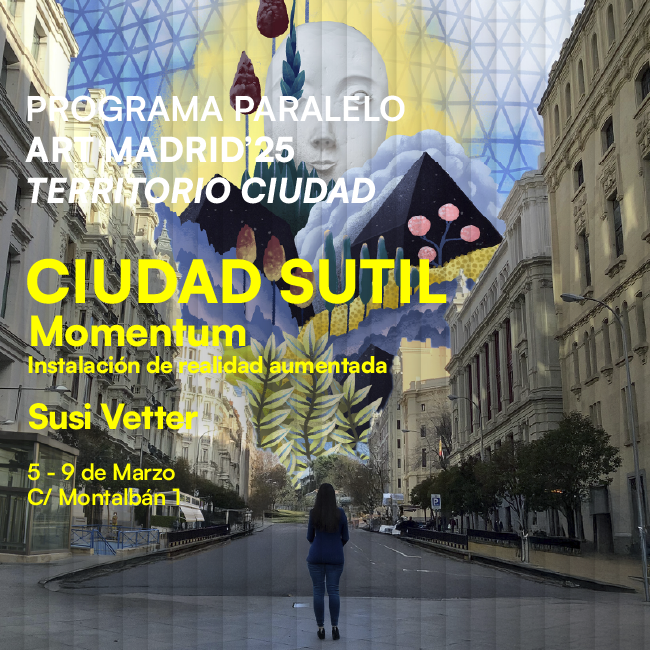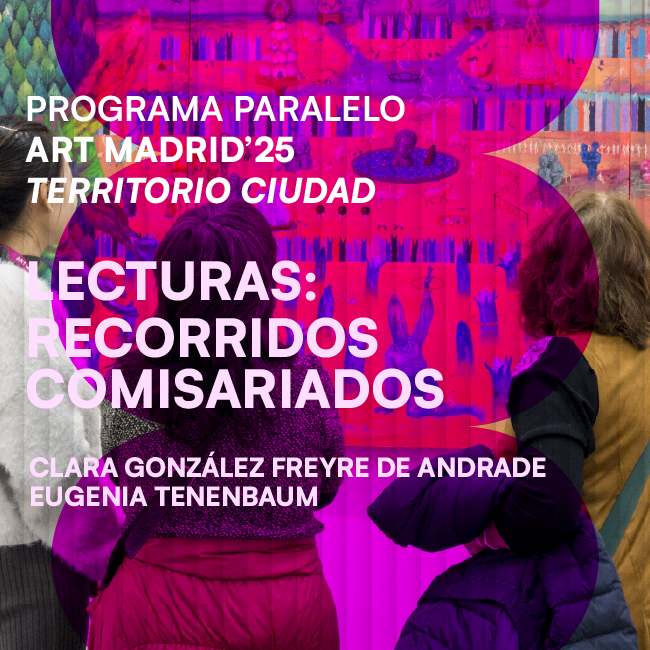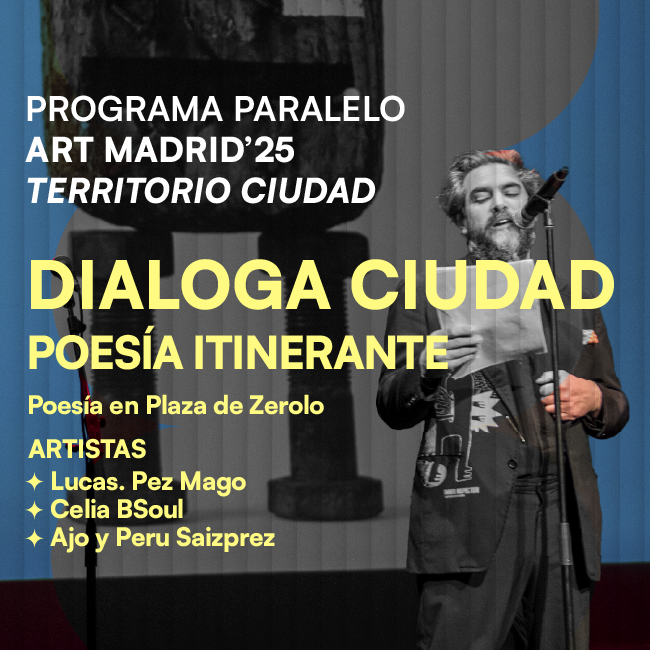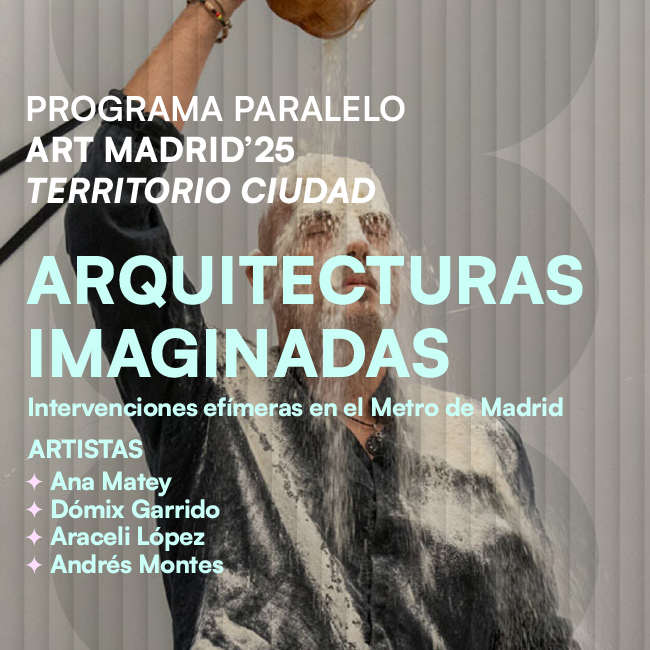Are you a contemporary art gallery and would like to participate in Art Madrid'26? The application period is now open!
The 21st edition of Art Madrid opens its application period. From March 4 to 8, 2026, the Galería de Cristal del Palacio de Cibeles will once again be the meeting point for national and international contemporary art. If you are a contemporary art gallery, this is your chance to be part of one of the most consolidated fairs in the Spanish circuit. The deadline for applications will be open until October 17, 2025.
The Art Madrid contemporary art fair has been taking place during the capital's Art Week for more than twenty years. Art Madrid is a multidisciplinary fair of new artistic trends with the participation of about 40 national and international galleries that work with painting, sculpture, graphic work, photography, installation and digital art of recent production.
Aimed at both a broad and specialized audience, the fair combines a carefully curated artistic selection with a strong commitment to the professionalization of the sector and the visibility of gallery work. In addition to its gallery program, Art Madrid also develops a parallel program of activities throughout the month of February, promoting dissemination, reflection, and dialogue among cultural agents, collectors, and new audiences.
A key mission: to connect art with society
The fair's main mission is to bring contemporary art closer to the general and specialized public, creating an inclusive platform that promotes artistic talent, encourages collecting and strengthens the gallery ecosystem. The objective is clear: to disseminate art within and beyond our borders, generate new audiences and give visibility to young talents.
Art Madrid is a key event for the promotion and commercialization of both national and international contemporary art, placing the city in the spotlight during Art Week. At the same time, it remains committed to fostering a space for reflection and learning.
PROGRAMS
GALLERY PROGRAM
In each edition, the Gallery Program of Art Madrid brings together about 40 exhibitors, both national and international, who present proposals focused on recently created contemporary artworks.
COLLECTOR’S PROGRAM
Art Madrid offers a specialized advisory service for galleries and the general public interested in acquiring artworks.
PATRONAGE PROGRAM
Art Madrid develops a patronage program as part of its commitment to artistic creation and the promotion of collecting. Through different categories of awards, the fair contributes to the professional development of artists while encouraging the incorporation of contemporary works into prominent private collections. This program is made possible thanks to the commitment of collaborating entities, collectors, and private companies who, through their support, actively contribute to strengthening the cultural ecosystem and consolidating new forms of patronage.
ACQUISITION AWARD
Art Madrid joins forces with institutions and companies to support artistic creation and gallery work at the fair through the presentation of several awards.
EMERGING ARTIST AWARD
Our sponsors, as part of their commitment to promoting contemporary art, will provide an award to one of the emerging artists participating in the fair.
RESIDENCY AWARD
An award that will be given to one of the participating artists in this edition, intended for carrying out an artist residency.
PARALLEL PROGRAM
The Parallel Program of Art Madrid serves as a platform for analysis, research, and critical thinking around contemporary issues. This line of programming incorporates cross-cutting discourses and interdisciplinary approaches that make it possible to address current challenges through artistic practice, curating, and cultural production.
ACTIVITIES
The program for Art Madrid’26 will include a series of activities taking place throughout the month of February and during Madrid Art Week at the Galería de Cristal of the Palacio de Cibeles. In this edition, in addition to the pre-fair activities, the third edition of Open Booth, the Performance Cycle, the program Lecturas: Curated Walkthroughs by Art Madrid, and the Interview Program will all be continued.
A comprehensive communication ecosystem
With an audience of more than 110 million impacts in its last campaign, Art Madrid deploys a 360 strategy that includes traditional and digital media, social networks (with more than 113K followers), newsletter, and a 360 virtual tour. The fair is also committed to its own content with interviews, articles and curated tours accessible on its blog and digital platforms.
A key event in Madrid's cultural agenda
With an average visitor age between 35 and 54 years, 60% women, and 40% new collectors, Art Madrid establishes itself as a diverse, inclusive fair aligned with the interests of the contemporary audience.
Our commitment to art and culture extends throughout the year. We strive to broaden access for new audiences and foster interest in art and culture across all social sectors. We also aim to promote and give visibility to artists, with a special focus on emerging talent. We view art and culture as essential pillars of social development, and through our event, we work to create accessible, dynamic spaces that foster communication and cultural expression.
IMPORTANT INFORMATION:
Applications for participation in the 21st edition of Art Madrid may be submitted to the following email address: info@art-madrid.com until October 17, 2025.





